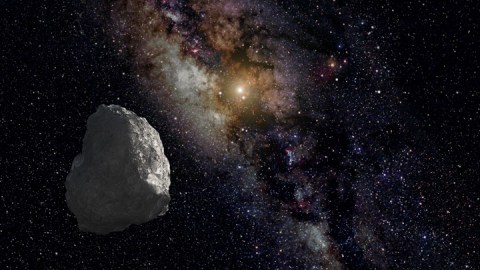An Ice World Just Found At the Edge of Our Solar System Is a Puzzler

Meet L91 (not pictured). It’s a small, ice-covered world that takes more than 20,000 years to make its way around the sun. And it’s way, way out there, beyond Pluto in the Kuiper Belt. According to astrophysicist Michele Bannister of Queen’s University Belfast, “It’s right at the limit of what we can detect.” Bannister announced the discovery of L91 on October 17, 2016 at the American Astronomical Society’s Division for Planetary Science meeting. L91 was found by a group associated with the Outer Solar System Origins Survey using the Canada-France-Hawaii Telescope in Mauna Kea, Hawaii.
L91 never gets closer to Earth than 50 astronomical units (AU), which is 50 times the distance between the Earth and sun. At its furthest point, it’s 1430 AU from us. L91 has an extremely elongated orbit, which fits right in with its other icy “neighbors” out beyond Saturn, except it’s even more stretchy. We don’t yet know L91’s size or mass.
Astronomers are theorizing over what gives L91 its orbital path. Bannister has suggested it may result from L91’s orbit being given little gravitational kicks by Neptune that eventually pushed the smaller body all the way out to the Oort cloud about 2000 AU from the sun. She proposes that it may have been pulled back in by the Milky Way’s own gravitational pull, or by a passing star.
Other scientists see L91’s orbit as more evidence of the mysterious, gigantic, and so-far-unseen Planet 9, which is being proposed as a possible explanation for the weird orbits of other far-flung bodies at the edges of our solar system. Planetary scientist Konstantin Batygin of the California Institute of Technology (Caltech) says this is a simpler explanation than the one Bannister has proposed, in spite of Bannister’s claim that when they modeled Planet 9 as being the source of the gravitational kicks, the resulting orbital tilt didn’t match what’s been observed.





